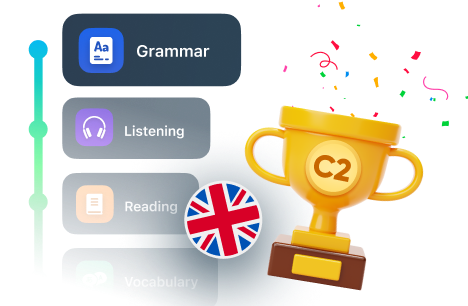
Beginner’s Guide on How to Introduce Yourself in Spanish

Get a FREE guide!
Want to sound like a native English speaker?
Get our free PDF with top tips that work.

Check your email!
Spanish has a wide variety of options in this department. There is a long catalog of expressions to greet people, and also, all Hispanic speakers include some gestures while greeting, like kisses and hugs. These are friendly greetings used in almost every conversation. And, grammatically speaking, when it comes to the language per se, they are not very different from English.
LiveXP: a way to learn Spanish in a 1-on-1 format
If you are looking for a platform to learn Spanish (or any other language in the world) autonomously, LiveXP can assist you. It has about 200 Spanish teachers from all imaginable countries.
Among the benefits you will find here are:
- A comprehensive platform offers didactic digital resources to facilitate learning.
- Teachers of all types, tailored to your language needs. You can even change them when necessary.
- A platform that allows you to track your progress.
- Customized classes tailored to any area of interest.
- Different lesson plans with flexible payments and easy-to-follow scheduling.
- The platform provides a word coach that complements each lesson.
The benefits of this type of learning include:
- Effective 1-on-1 learning. There are many applications for learning with a tutor or software that offers 1-on-1 classes.
- Flexible lesson scheduling. This type of teaching offers the possibility to adapt studies to your time slots.
- Tutors with different accents. Since Spanish is spoken in more than 21 countries (and many other countries have also adopted it as a second language), you will encounter a variety of accents.
- Learn with several tutors simultaneously. Autonomous learning offers many freedoms.
Common expressions for an introduction in Spanish
Basic Spanish greetings
All languages worldwide have basic greeting expressions, and Spanish is no exception. Here are some generic phrases found in all Spanish-speaking countries:
- ¡Hola! - Hello! - A generic greeting expression. All countries and almost every conversation have it.
- ¡Hey! - Hey! - An imported expression from English with the same meaning. However, there are two differences. Firstly, the “H” is not pronounced in Spanish, so it sounds like /ei/. Secondly, when it comes to proper grammar for self-introduction in Spanish, it should be written with an exclamation mark at the beginning (¡).
- ¿Cómo está(s)? - How are you? - Can be used alone (as in the example) or to start a conversation when greeting. If we include the “(s)” in the expression, it is used in an informal context.
- ¿Qué tal? - How are you doing? - Very commonly used in informal conversations in Spanish.
- ¿Cómo va? - How are you? - Similar to the expression “cómo estás.” However, used in informal contexts and not in all countries.
- Buenos días - Good morning - Introduce yourself in Spanish with the most universal greetings for every morning in formal and informal contexts.
- Buenas tardes - Good afternoon - For the afternoons in formal and informal contexts. But a warning: in Spanish, “buenas tardes” works until the sun sets. It could be at 6:00 pm or 8:30 pm, depending on the season.
- Buenas noches - Good night - As soon as the sun sets, any hour in the night is “buenas noches.” We use this greeting for the evenings and nights in formal and informal contexts. Note: In Spanish, there is no expression for “good evening,” so it can be used in this context as well.
Introducing yourself to someone for the first time
Now, let’s go over some introduction expressions:
- Me llamo… / Mi nombre es… - My name is… - These two expressions mean the same thing. We use them to say our name, although it is not as frequent.
- Soy… - I’m… - Used to say our name or profession—a very common expression.
- Encantado de conocerte… - Pleased to meet you… - A formal expression when introducing yourself in Spanish.
- Es un placer… - Nice to meet you… - A slightly more informal introduction expression.
- ¿Cuál es tu(su) nombre? - What is your name? - For the person’s name. Grammar note: If we use the pronoun “tu” in our sentence, it is informal, but if we use “su,” it changes to a formal sentence.
Introducing people in Spanish
When we are introducing friends, family members, acquaintances, colleagues, or partners, we’ll say:
- Este es… - This is… - An informal introduction of a person. It is usually used for introducing friends, partners, or family members.
- Se llama… - His/her name is… - Another expression used to say someone's name. Can be both formal and informal.
- Te presento a - I’d like to present you… - An expression used to say someone's name in a more formal sense.
Saying goodbye in Spanish
For farewells, these expressions are also common:
- ¡Adiós! - Goodbye! - The most frequent farewell expression in this language. It is probably the word we apply the most when we are saying goodbye in any context.
- ¡Chao! - Bye! - We use this one a lot in generic conversations. It is another very common expression, but more used in informal contexts.
- ¡Hasta mañana! - Until tomorrow! - We use this one in many oral conversations. A way to say goodbye to someone, knowing you will see them again tomorrow.
- ¡Hasta luego! - Until next time! - We use it in conversations or even in chats and e-mails.
- ¡Hasta pronto! - Take care! - We could use it in a more formal environment or when we wanna see someone again, especially with people you don’t know.
- ¡Nos vemos (pronto)! - See you soon! - We use it with the same purpose as the previous one, but in a more informal way.
Cultural curiosities related to self-introductions in Spanish
Finally, just like in any other culture, these expressions are sometimes accompanied by gestures. Native Spanish speakers tend to be very cheerful, lively, and expressive. Therefore, their greetings and farewells often include:
- Cheek kisses. This is almost universal in all Hispanic countries. We give kisses to both acquaintances and strangers, while in Spain, two kisses are given.
- Hugs. For women or men, if there is a level of affection or there are people who know each other, giving a hug to greet or say goodbye is very normal.
- Pats. If the level of trust is even higher, there are playful greetings involving taps or pats on the shoulders or arms.


















